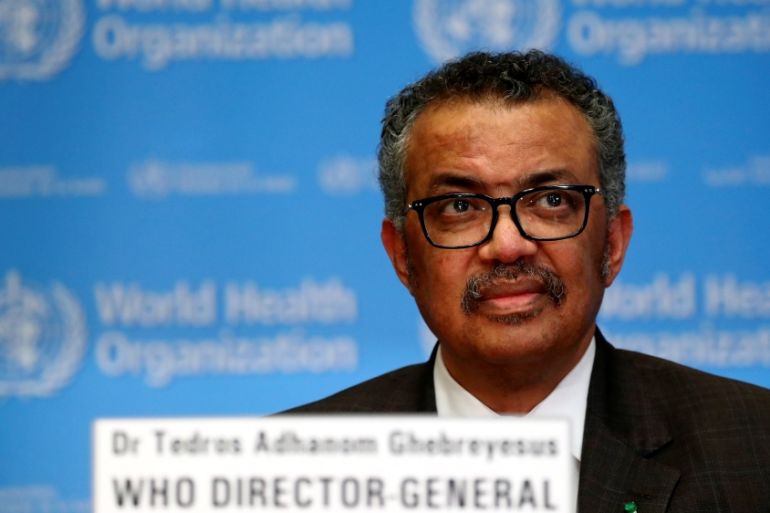Developing countries need debt relief in virus fight, WHO says
World Health Organization says it supports debt relief for developing countries along with the IMF and World Bank.

The head of the World Health Organization (WHO) has voiced deep concern about the rapid escalation and global spread of COVID-19 cases from the new coronavirus, which has now reached 205 countries and territories.
WHO Director-General Tedros Adhanom Ghebreyesus said on Wednesday that his agency, the World Bank and the International Monetary Fund (IMF) backed debt relief to help developing countries cope with the pandemic’s social and economic consequences.
Keep reading
list of 3 items‘Chronic’ global shortage of coronavirus protective gear: WHO
WHO calls on Asia-Pacific countries to stay vigilant in pandemic
Tedros praised India’s $22.6bn economic stimulus plan – announced after a 21-day lockdown imposed last week – to provide free food rations for 800 million disadvantaged people, cash transfers to 204 million poor women and free cooking gas for 80 million households for the next three months.
“Many developing countries will struggle to implement social welfare programmes of this nature,” Tedros told a virtual news conference at the organisation’s Geneva headquarters.
“For those countries, debt relief is essential to enable them to take care of their people and avoid economic collapse. This is a call from the WHO, the World Bank and IMF – debt relief for developing countries,” he said.
But debt-relief processes are lengthy, Tedros said.
“In the past five weeks there has been a near-exponential growth in the number of new cases and the number of deaths has more than doubled in the past week,” he said.
“In the next few days we will reach one million confirmed cases and 50,000 deaths worldwide,” he added.
China, where the coronavirus outbreak first emerged in December, reported dwindling new infections on Wednesday and disclosed for the first time the number of asymptomatic cases, which could complicate how trends in the outbreak are read.
Asked about the distinction, Dr Maria ver Kerkhove, a WHO epidemiologist who was part of an international team that went to China in February, said the WHO’s definition included laboratory-confirmed cases “regardless of the development of symptoms”.
“From data that we have seen from China in particular, we know that individuals who are identified, who are listed as asymptomatic, about 75 percent of those actually go on to develop symptoms,” she said, describing them as having been in a “pre-symptomatic phase”. The new coronavirus causes the respiratory disease COVID-19.
The outbreak continues to be driven by people who show signs of disease including fever and cough, but it is important for the WHO to capture that “full spectrum of illness”, she added.